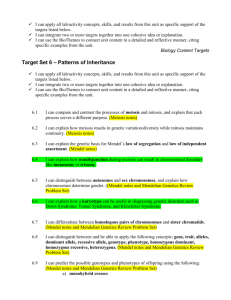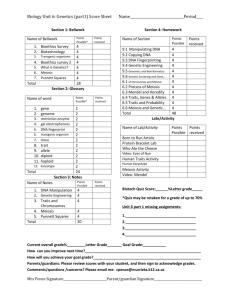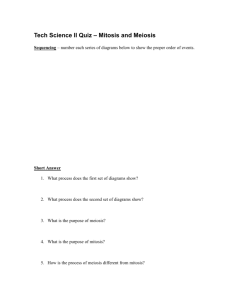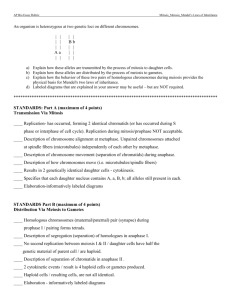Study guide 1
advertisement
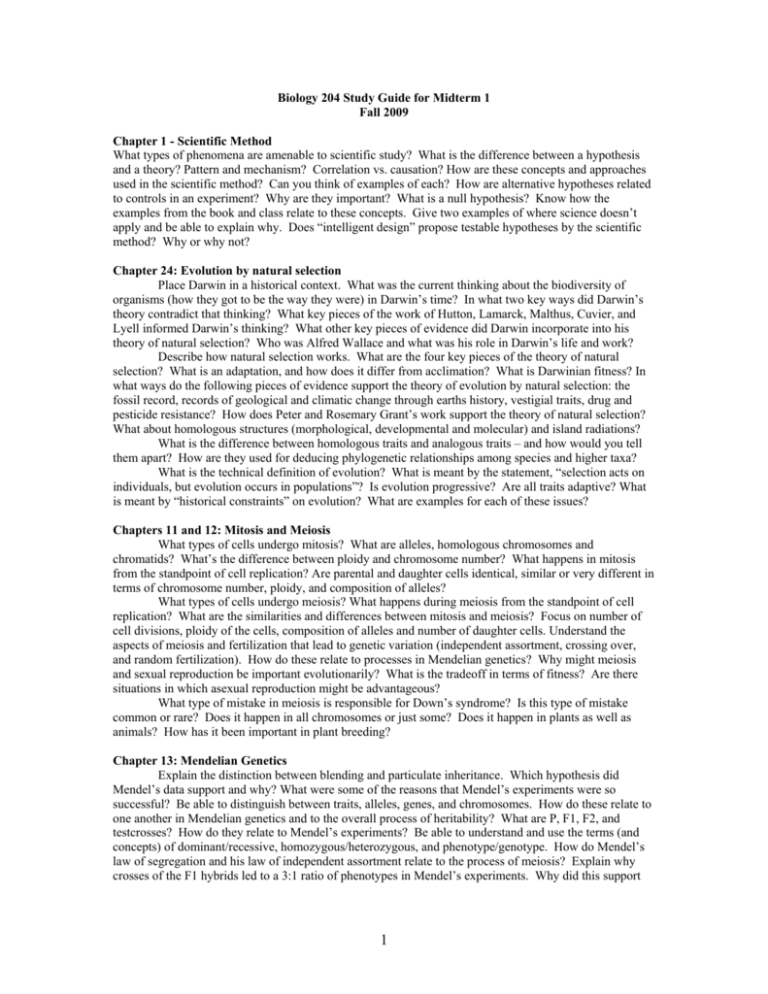
Biology 204 Study Guide for Midterm 1 Fall 2009 Chapter 1 - Scientific Method What types of phenomena are amenable to scientific study? What is the difference between a hypothesis and a theory? Pattern and mechanism? Correlation vs. causation? How are these concepts and approaches used in the scientific method? Can you think of examples of each? How are alternative hypotheses related to controls in an experiment? Why are they important? What is a null hypothesis? Know how the examples from the book and class relate to these concepts. Give two examples of where science doesn’t apply and be able to explain why. Does “intelligent design” propose testable hypotheses by the scientific method? Why or why not? Chapter 24: Evolution by natural selection Place Darwin in a historical context. What was the current thinking about the biodiversity of organisms (how they got to be the way they were) in Darwin’s time? In what two key ways did Darwin’s theory contradict that thinking? What key pieces of the work of Hutton, Lamarck, Malthus, Cuvier, and Lyell informed Darwin’s thinking? What other key pieces of evidence did Darwin incorporate into his theory of natural selection? Who was Alfred Wallace and what was his role in Darwin’s life and work? Describe how natural selection works. What are the four key pieces of the theory of natural selection? What is an adaptation, and how does it differ from acclimation? What is Darwinian fitness? In what ways do the following pieces of evidence support the theory of evolution by natural selection: the fossil record, records of geological and climatic change through earths history, vestigial traits, drug and pesticide resistance? How does Peter and Rosemary Grant’s work support the theory of natural selection? What about homologous structures (morphological, developmental and molecular) and island radiations? What is the difference between homologous traits and analogous traits – and how would you tell them apart? How are they used for deducing phylogenetic relationships among species and higher taxa? What is the technical definition of evolution? What is meant by the statement, “selection acts on individuals, but evolution occurs in populations”? Is evolution progressive? Are all traits adaptive? What is meant by “historical constraints” on evolution? What are examples for each of these issues? Chapters 11 and 12: Mitosis and Meiosis What types of cells undergo mitosis? What are alleles, homologous chromosomes and chromatids? What’s the difference between ploidy and chromosome number? What happens in mitosis from the standpoint of cell replication? Are parental and daughter cells identical, similar or very different in terms of chromosome number, ploidy, and composition of alleles? What types of cells undergo meiosis? What happens during meiosis from the standpoint of cell replication? What are the similarities and differences between mitosis and meiosis? Focus on number of cell divisions, ploidy of the cells, composition of alleles and number of daughter cells. Understand the aspects of meiosis and fertilization that lead to genetic variation (independent assortment, crossing over, and random fertilization). How do these relate to processes in Mendelian genetics? Why might meiosis and sexual reproduction be important evolutionarily? What is the tradeoff in terms of fitness? Are there situations in which asexual reproduction might be advantageous? What type of mistake in meiosis is responsible for Down’s syndrome? Is this type of mistake common or rare? Does it happen in all chromosomes or just some? Does it happen in plants as well as animals? How has it been important in plant breeding? Chapter 13: Mendelian Genetics Explain the distinction between blending and particulate inheritance. Which hypothesis did Mendel’s data support and why? What were some of the reasons that Mendel’s experiments were so successful? Be able to distinguish between traits, alleles, genes, and chromosomes. How do these relate to one another in Mendelian genetics and to the overall process of heritability? What are P, F1, F2, and testcrosses? How do they relate to Mendel’s experiments? Be able to understand and use the terms (and concepts) of dominant/recessive, homozygous/heterozygous, and phenotype/genotype. How do Mendel’s law of segregation and his law of independent assortment relate to the process of meiosis? Explain why crosses of the F1 hybrids led to a 3:1 ratio of phenotypes in Mendel’s experiments. Why did this support 1 the idea of particulate inheritance? How do the rules of probability apply to Mendelian genetics and ratios of genotypes? What ratio of phenotypes would you expect if different characters assorted together rather than independently? Why does the 9:3:3:1 ratio support the idea of independent assortment of characters? How do traits linked on the same chromosome complicate this picture? What role does crossing over play in independent assortment and what determines the degree to which traits on the same chromosome are linked or independent? How do dominance, incomplete dominance and co-dominance differ? What are some examples of each? Are the latter two the same as blending? What are quantitative traits and how do they arise? Did the traits Mendel studied show any of these effects? 2




